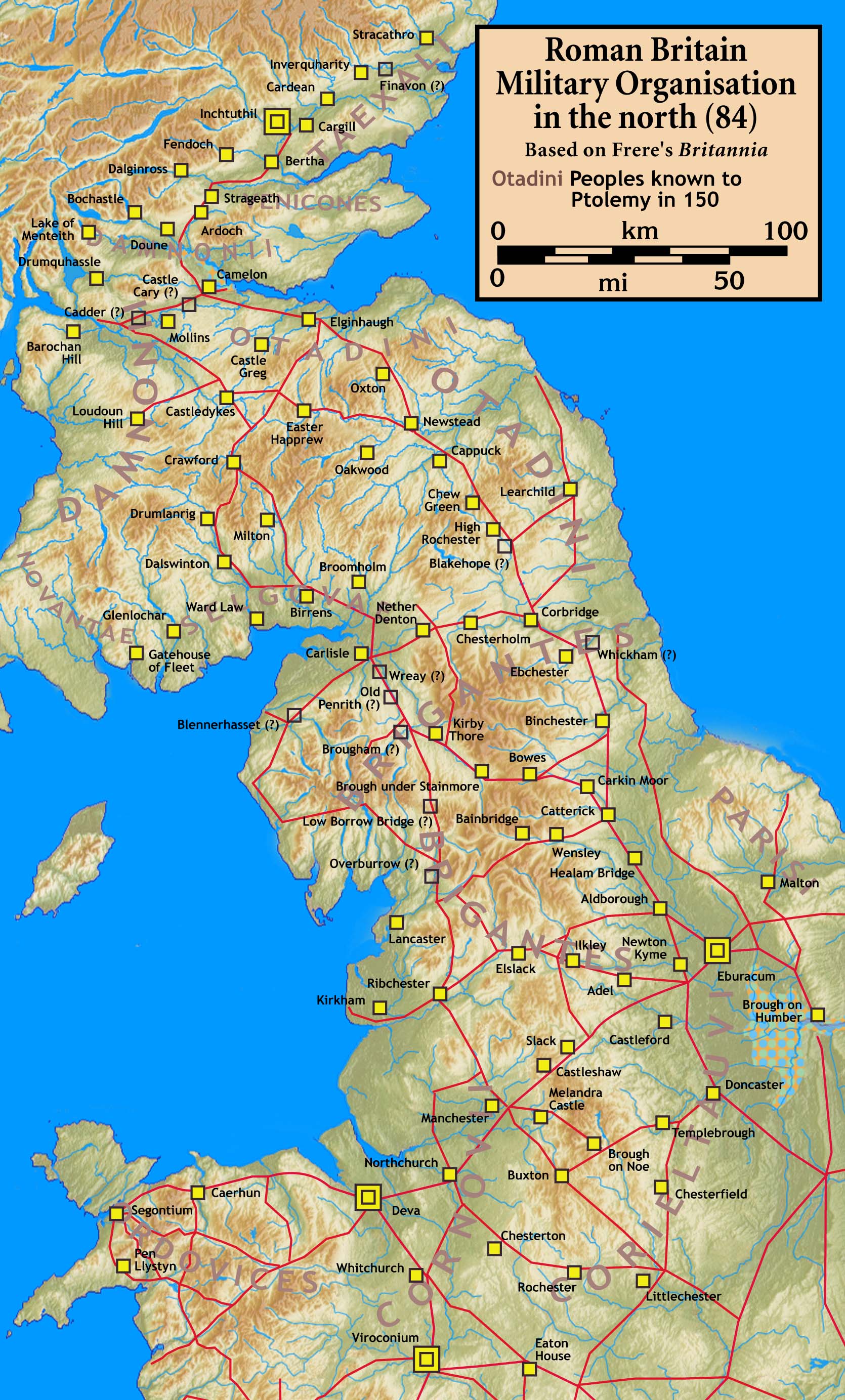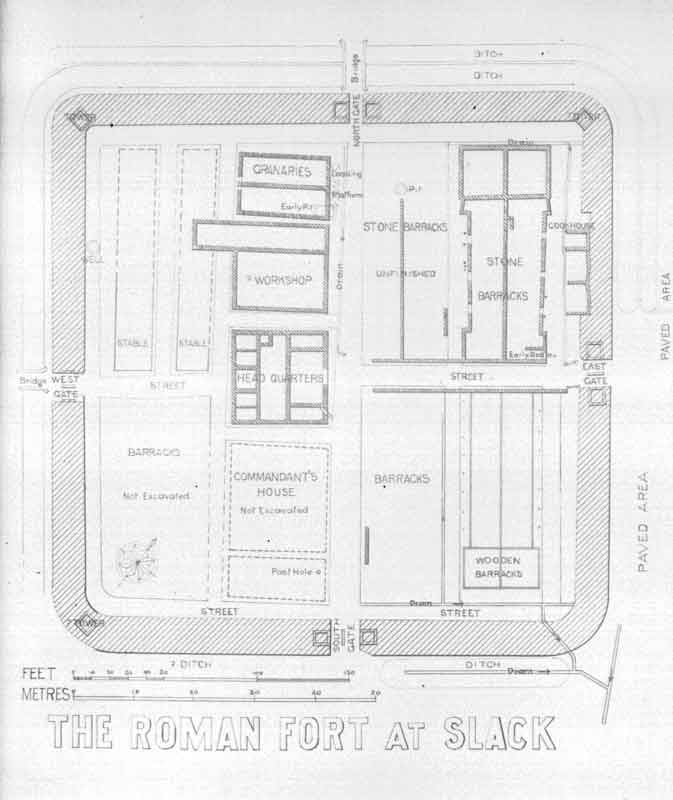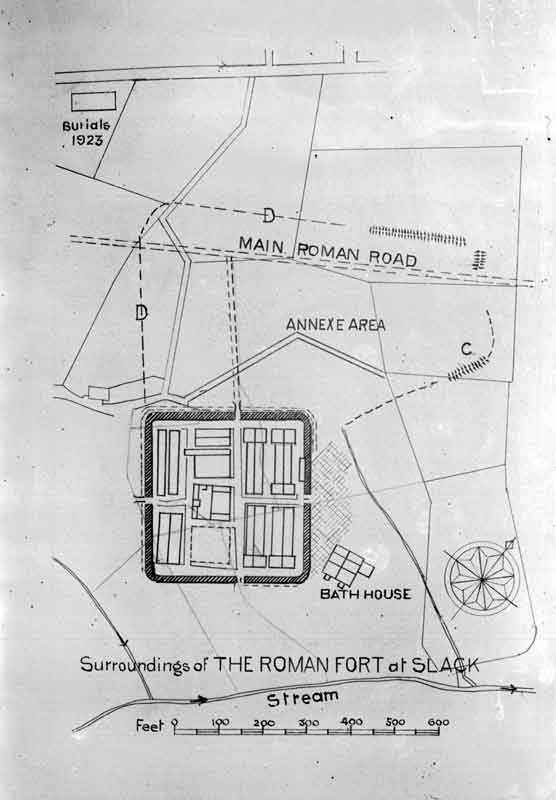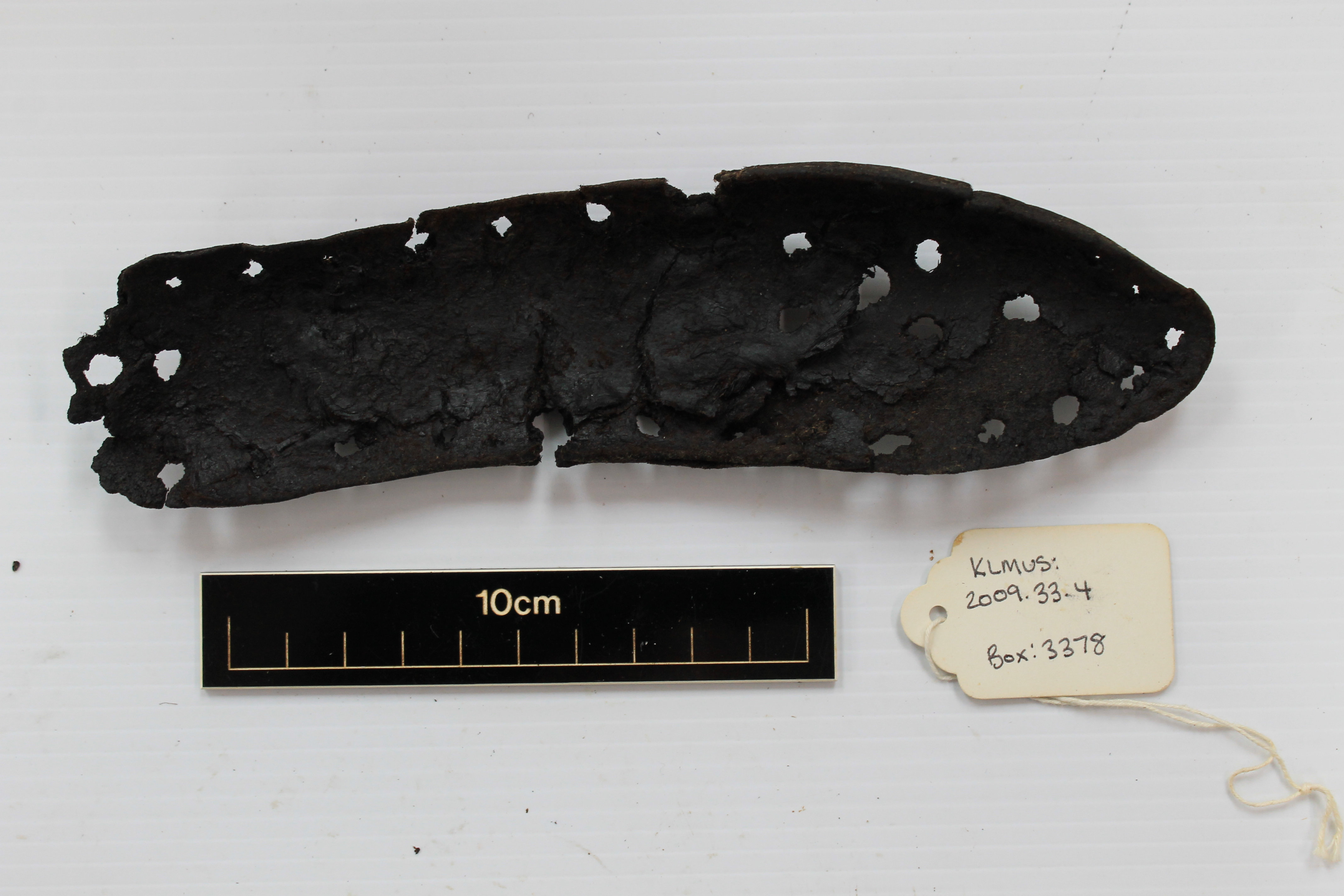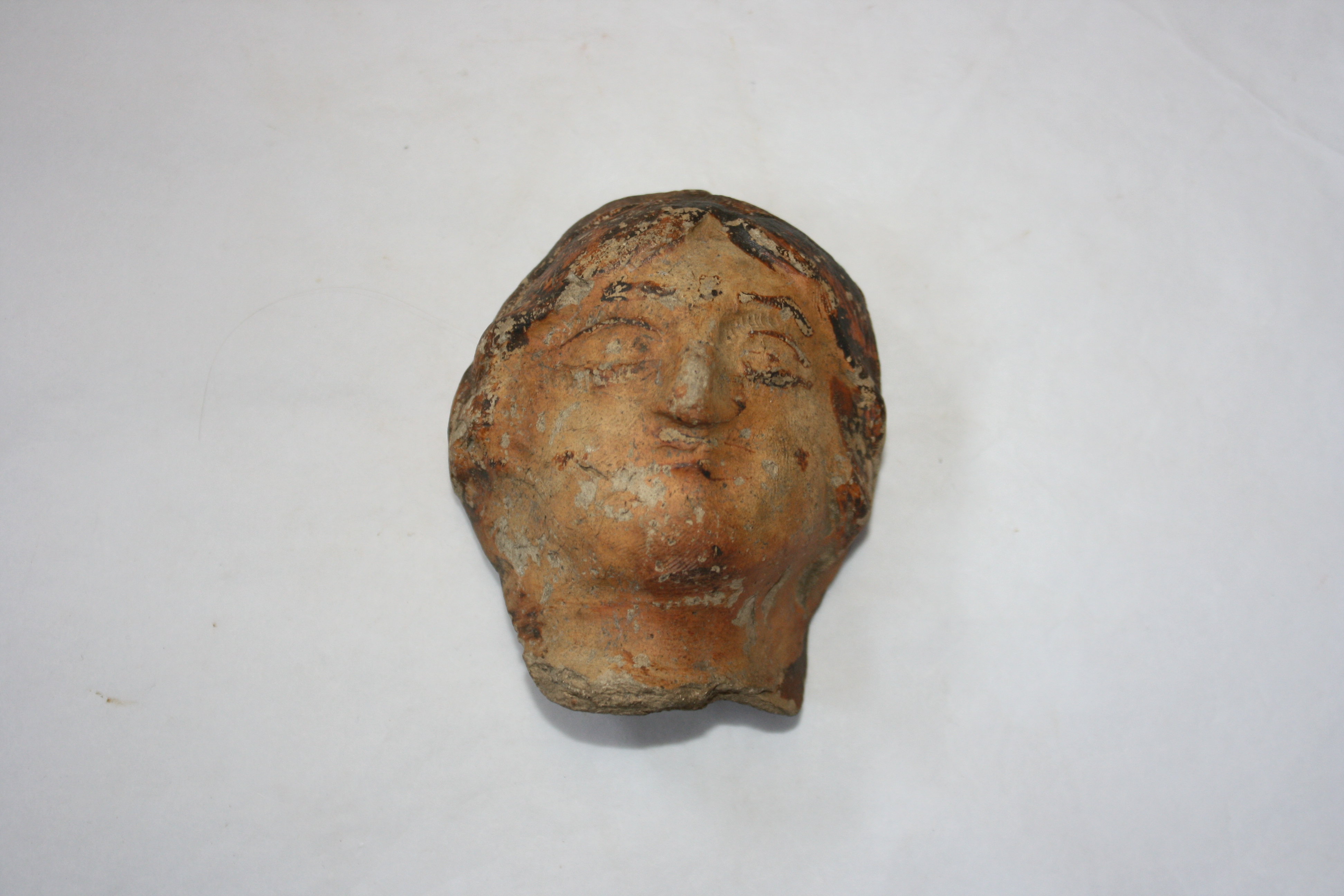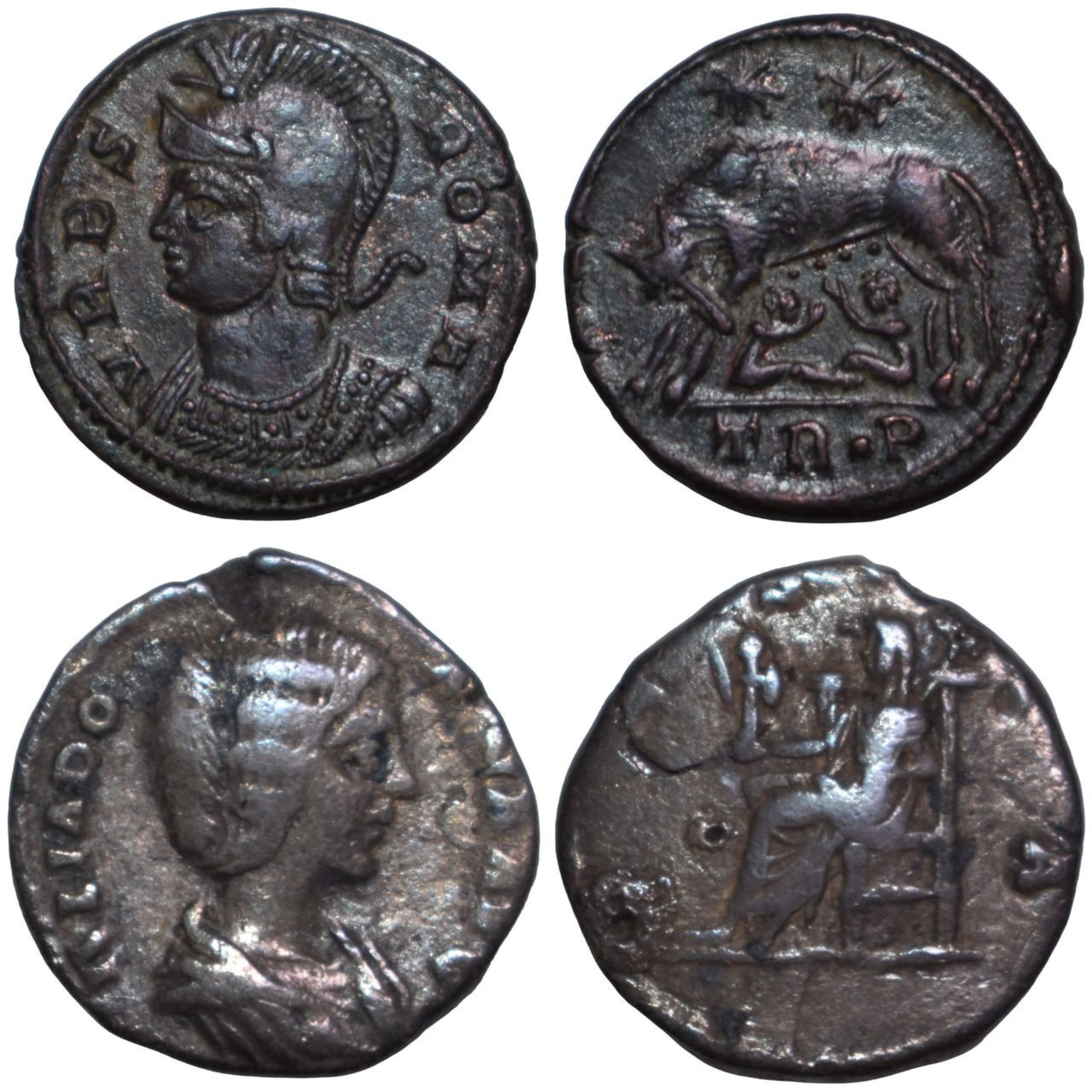The most significant Roman site near Huddersfield is a Roman fort at Slack, known to the Romans as Cambodunum. It was built by the Roman commander Agricola in 70 – 80 AD to guard one of the main military roads across the Pennines, linking Chester (Diva) and York (Eboracum).
The regiment which garrisoned Slack was an auxiliary battalion called the 4th Cohort of Breuci. They came from a region in modern-day Bosnia and Herzegovina. Auxiliary troops were recruited from peoples whose land had been taken over by the Romans. They were less armed than elite Legionaries. There would have been around 450 soldiers, plus the commander and his staff, based at Slack.
The fort was built on a site with good natural protection from streams on three sides. Like most Roman forts, Slack followed the same standard design: a rectangle with rounded corners, with roads crossing from the four gates. The Romans built their forts in the same way everywhere. This meant that soldiers, who came from all over the Empire and often spoke different languages, could always find their way around. It made life easier, the fort quicker to use, and gave soldiers a familiar layout wherever they were sent.
Most of our knowledge of this layout comes from archaeological excavation of sites, there is little written evidence historians can use.
The headquarters would have been a large building at the centre of the fort and contained rooms for storing weapons and keeping records.
The barrack block consisted of two rows of rooms set back-to-back. Ordinary soldiers shared the barrack, sleeping side by side together in one large space, while the officers had their own larger, separate rooms.
The civilian settlement, or vicus, grew up alongside the road. It would have included traders, craftsmen and families of soldiers.
Roman forts were usually furnished with a bath house. They served as places of exercise and relaxation for the soldiers. They would be opened to civilians at certain times. The Romans used hypocausts to heat the water through pumps and tunnels under the ground.
Daily Life
Life at the fort and vicus would have seemed very luxurious to the average Brigantian. However, the settlement at Slack was not typical of life under Roman rule. The surrounding area was not rich in natural resources or trade goods, so from a Roman point of view it was of limited value. Because of this, the Romans made little effort to change how local people lived, and for many, daily life continued much as it had before.
One important change was the introduction of a money economy. The Brigantes had not issued their own coins and likely relied on a system of barter, trading goods and services directly. Under Roman rule, however, they were required to use coins to pay taxes and save wealth, which tied them into the wider Roman economy.
The fort was occupied for around 60 years and then abandoned in more peaceful times.
